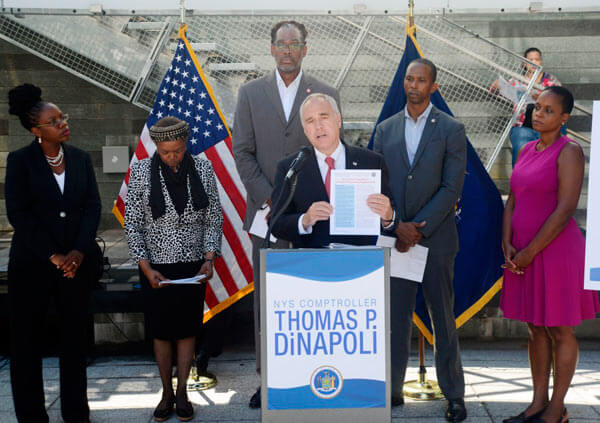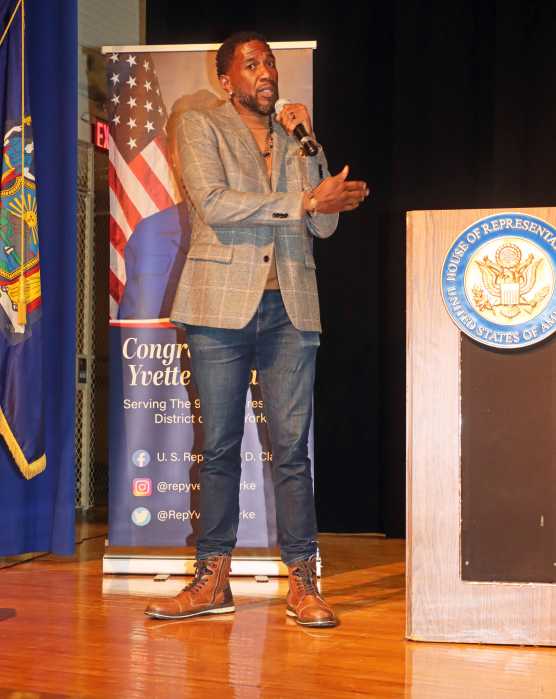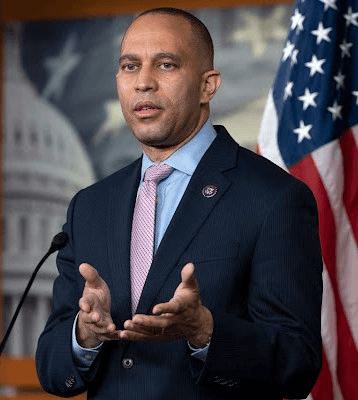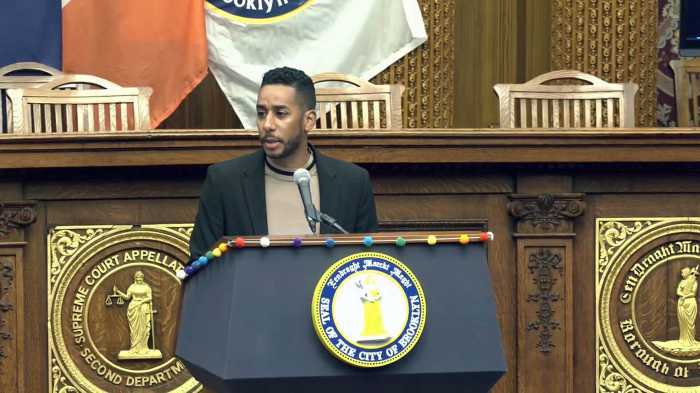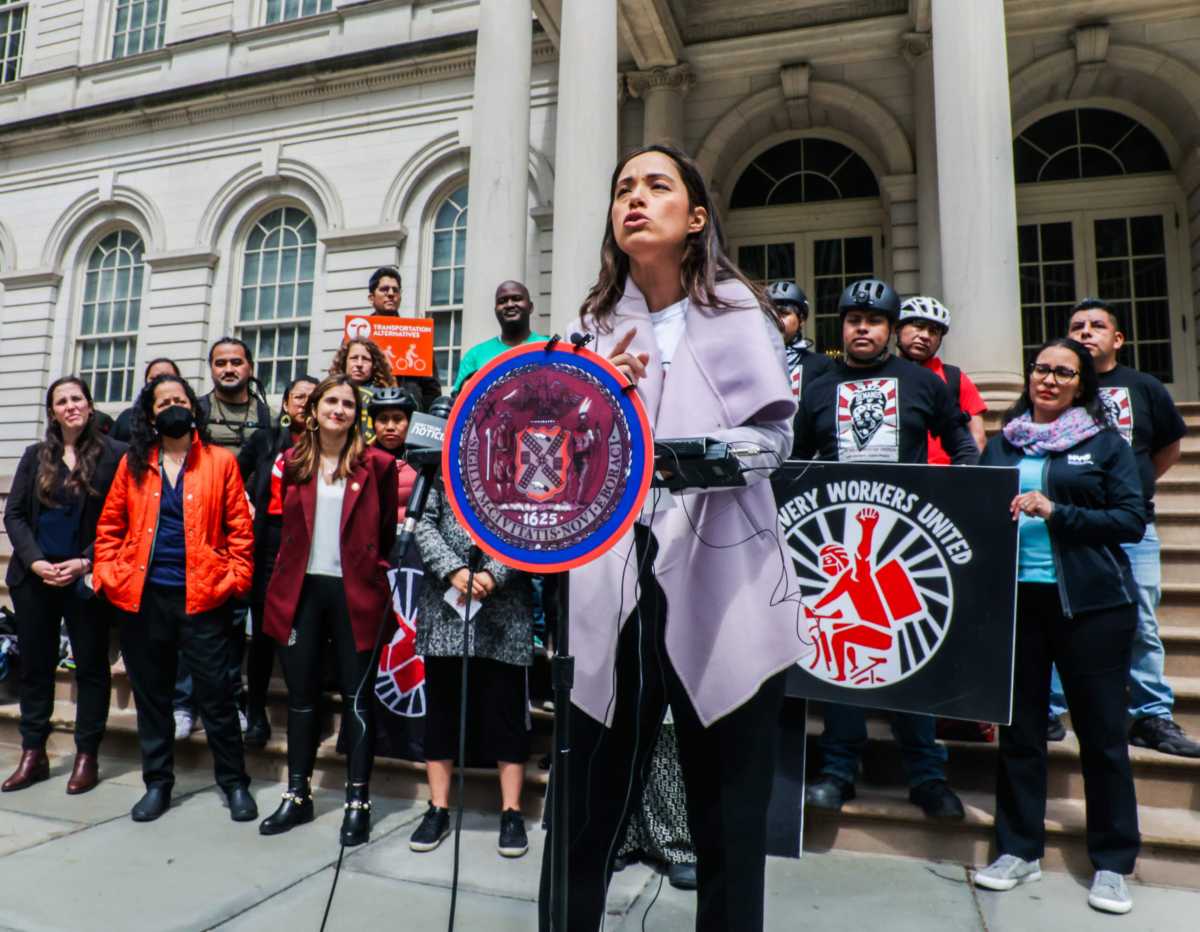The mode of gentrification has gradually taken grounds in Brooklyn. These undergoing changes in the Borough have left Bedford-Stuyvesant as a community raising against its own. A neighborhood with a longstanding history of great Black arts and culture and sturdy, beautifully carved brownstones homes any potential buyer would line up to purchase, but in the midst of the waving change there are many that are left far behind.
In recently concluded research work carried out by the New York State Comptroller’s Office on the historic North Central Brooklyn community, they reported back to local community leaders and elected officials on their findings. On Friday, Sept. 15 at the Bedford-Stuyvesantt Restoration Plaza, State Comptroller Thomas P. DiNapoli divulge on these findings and the effect the changes now have on Bedford-Stuyvesant. DiNapoli said that although the community is experiencing economic growth in most areas, there are gaps and disparities despite this growth. “The snapshot is not bias, it looks at the tale of two cities,” DiNapoli explained. The resurging of Bedford-Stuyvesantt must be to the benefit of all its residents,” he commented.
The report shows an influx of more than 150,000 new residents over the last ten years. This is a 34 percent increase in the population. In this report it was further revealed that long-term residents are earning an average of $28,000 per year while new residents earn $50,200 in average. The number of household with incomes below the federal poverty level has increase by 13 percent in the community since the end of the recession. According to the report presented, one third of all household in Bedford-Stuyvesant receive some form of supplemental Nutrition Assistant Program (SNAP), food stamps etc.
The new residents are mainly white, young and immigrants, the report stated. These findings also show that such situations have put pressure on long term residents making it increasingly difficult for them to find affordable housing in Bedford-Stuyvesant. The State Comptroller noted that the findings reveal that the immigrant community in Bedford-Stuyvesant has increased by 33 percent, when compared to 6.5 percent overall in Brooklyn and 12 percent citywide, the Dominica Republic is the fastest growing group with 29,000 in population other immigrant groups are from Jamaica, Guyana, Barbados, Mexico each at seven percent and Trinidad & Tobago at 4.5 percent.
DiNapoli said the report revealed that since 2000, businesses have grown in Bedford Stuyvesant by 73 percent, the fastest in the city overall. The retail trade and leisure and hospitality sectors had the largest gains between 2009 and 2016. In the meantime, DiNapoli noted, the neighborhood has a shortage of primary care physicians and waiting time in the neighborhood hospitals emergency rooms exceeds that of the statewide average.
In the finding it was revealed that elementary schools and middle schools have shown notable improvement in English and mathematics proficiency but is still lagging behind the citywide average. On the issue of crime, the report shows that violent crime, murders, rape, robbery and assaults have declined by over 44 percent and major felony crimes declined by one third between 2000-2016 but despite these revelations, crime remains a problem in Bedford-Stuyvesant.
The report also shows that private sector employment in Bedford-Stuyvesant has reached a record level in 2016, an increase of 45 percent, but housing and income remain as problems for long-term residents. DiNapoli noted, “The median monthly rent, including utilities increased by 77 percent from 2005 to 2015, rising to $1,230.” The report disclosed also that the share of households that devoted more than 30 percent of their income to rent have increase from 47 percent to 55 percent between 2005 and 2015.
DiNapoli concluded by saying that although a lot of progress has been made there is a need for total inclusion and he asked that the elected officials from the neighborhood, the Brooklyn Chamber of Commerce and the Bedford-Stuyvesant business and community residents join with him and partner for this inclusion so that every resident can benefit from this wave of prosperity that is now existing in Bedford-Stuyvesant.


